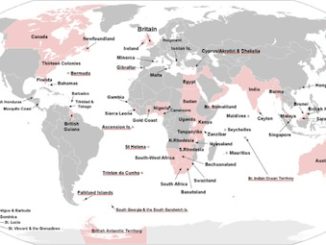
Research in the area of typological linguistics, that is, the study of the ways in which languages can differ from each other or the variation that language exhibits, has led to many theoretical advances made by contemporary linguistics. To illustrate, we can say that most modern advances in phonological theory emerged from the description of African languages. Ultimately, linguistic theory and languages are inseparably connected.
In the meantime, there is still a tendency for viewing everything “fix” in language, that is, to study linguistic phenomena as purely synchronic facts. Rather, natural languages are living things, and all living things change. So that, a language may lose a certain way of expressing, for example, the difference between subjects or subject/object, but, as pointed out by Scargill (1969), it will develop a new way “to replace what it has lost.”
In a word, in these series of articles we will discuss the possibility that Kaingáng has used consistently the agentive postposition tóg (see Wiesemann, 1972:104) as an ergative marker in independent clauses. For the most part, then, our only concern here is to show that Kaingáng displays at least some degree of ergativity in elementary transitive and intransitive clauses.
In what follows, we will examine the Kaingáng subject/object case-marking typology. The research proposed here is based on data from Southern Kaingáng dialogues and narratives published by FUNAI. Certainly, we will use further data which were collected in the Brazilian state of Rio Grande do Sul.
Kaingáng nominal ergative marking: the split system
Let us begin our story by introducing anew the basic definitions. It is important that we have got the terms straight. As previously stated, the ergative case identifies with a special mark the subject (St) (not necessarily the agent) of the transitive verb, whereas the direct object (DO/O) of a transitive verb and the subject of an intransitive verb (Si) are zero-marked by absolutive case. In contrast, nominative-accusative languages (or simply accusativity) usually mark the object of a transitive verb with the accusative case, whereas the intransitive and transitive subjects are generally zero-marked by nominative (that is, regardless of the valency of the verb).
Kaingáng is an OV typological type of language. Canela-Kraho and a number of other languages of the Ge family appear to be of this type . More precisely, Kaingáng shows the following word order: Object-Verb (O-V), Noun-Postposition (N-Postp), Noun-Adjective (N-Adj), and Genitive-Noun (Gen-N). So, Kaingáng displays, like Basque, the (N-Adj) disharmony. Evidently, Kaingáng is a slightly inconsistent OV type. Nevertheless, the so-called inconsistent type (Greenberg’s Type 24) is, as Derbyshire (1987:314) points out, “the most commonly found among Amazonian languages”. That is: N-ADJ: GEN-N: N-POSTP.
In contrast to VO languages (e.g. English and Portuguese) which exhibit the free morphemes called prepositions (pre-position), postpositions are found in OV languages like Kaingang and Shokleng. By means of postpositions, Kaingáng marks the function of the nominal elements on its clause. Besides that, Kaingáng has a set of aspectual particles (for expository convenience, from this point on, we will use the term postposition for case markers and the term particle for aspectual markers), which are positioned as the last element in a clause. There are three broad categories of aspect in Kaingáng: stative, imperfective, and perfective (see Wiesemann, 1980; Kindell, 1982). Finally, these particles are not obligatory elements in the Kaingáng clause.
Plainly, the distinctions expressed by the temporal aspect of the Kaingáng clause interfere with casual marking of the nominal elements, namely: in progressive and perfective clauses, the transitive subjects (St) are marked by ergative (tóg), and the intransitive subjects by nominative
(vỹ); in habitual and stative clauses, both the subjects are marked by nominative vỹ. As a rule, the object in Kaingáng is always unmarked for case.
Finally, we should keep in mind that if Kaingáng has a split case-marking system there are two systems living together in the language.
Statement of the Problem
As already noted, Kaingáng language displays a pattern of split ergativity on nominal case-marking and a “pure” ergative pattern on verbal agreement. Moreover, Kaingáng ergative case-marking does not follow the “classic” ergative pattern. Similarly, as it can be seen from Urban (1985), Shokleng also shows an intricate ergative type of case-marking.
From a typological point of view, the remarkable fact here is that the language displays a marked nominative case that occurs only with full NP subjects (St/Si) in habitual and stative clauses which have word order SV. Notice that the classic ergative type marks with absolutive (no overt marking) the subjects in non-ergative sentences. For this reason, it seems reasonable to suppose that Kaingáng has a very restricted “impure” tripartite system associated exclusively with word order SV and full NP subjects. Once again, Kaingáng is not a pure ergative type. As a matter of fact, tripartite systems, as Comrie (1978:334) suggests, may be viewed perhaps diachronically as an intersection of accusative and ergative types.
In closing, it is perhaps worth mentioning that there are not diachronic data from Kaingáng; that is, data of the pre-20th century are inexistent. Surely then, it is hard to investigate how the current system can arise in Kaingáng. Hence, for the present, it seems reasonable to conclude that the postpositions tóg/vỹ, which mark the full NP subjects with order SV, have different properties.
Where’s the Data?
In order to better understand the scope of this discussion, let us examine now some Kaingáng sentences. Consider the examples (1) and (2) below:
1) Kẽnkẽr vỹ tẽ tĩ. Parrot NOM-marker TO FLY HAB-asp.The parrot flies.
2) Nẽnẽ tóg pépo vẽg mũ, goj kãki. Baby ERG-marker frog ABS TO SEE PERF-asp. water inside. The baby saw a frog inside the water.
In (1), an intransitive sentence, the Si kẽnkẽr [a kind of parrot] is marked (followed) by the nominative postposition vỹ. Notice that the particle tĩ indicates habitual aspect, i.e. expresses a habitual or a repetitive event. Next, in (2) the St nẽnẽ (‘baby’) is marked by the agentive marker tóg. The perfective particle mũ indicates a situation which has an end. Both phrases have full NP subjects with word order S(O)V.
To sum up, the difference between the two phrases is: (1) habitual aspect/valency intransitive; and (2) perfective aspect/valency transitive. So: in Kaingáng the subjects receive a distinct casual marking.
Equally important, it is to observe here that in word order (O)VS the subject NP is usually a pronoun NP which never is followed by vỹ. That is to say, the subject pronoun NP is zero-marked.
Notwithstanding, we already know that the usual for classic ergative languages is to follow the schema: Si=O (absolutive-ZERO)/St (ergative-MARKED). In essence, absolutive is (virtually) the unmarked case. Judging from this viewpoint, we are not talking about “extended ergative” to cover Si. For one thing, extended ergative is the marking of the volitional/agentive subjects of the intransitive verbs. Yet, as the examples will illustrate in Part 3, Kaingáng is NOT an active-stative language like Basque, for instance.
Givón (2001) writes that in principle a nominative-accusative system with a morphologically-marked subject but an unmarked object is a possible type. Truly, Givón interprets a system like that as “derived diachronically from re-analysis of another well-known type, the ergative-absolutive system”. It is because of this that we should interpret Kaingáng facts in view of two things: (a) the system of case-marking is a split (i.e. nominative-accusative and absolutive-ergative live there together); (b) the language is changing. Thus, the point is that surely still remain features of a more consistent period. In a word, things are messy. Even though, we should ask whether there are other syntactic or pragmatic motivations for this phenomenon.
Now, consider the examples of split ergativity in (3) and (4) below:
3) Nẽnkanh vỹ monh mré rãnhrãj tĩ. Nẽnkanh NOM-marker ox with TO WORK HAB-asp. Nẽnkanh works with the ox.
4) Rãrĩr vỹ rãgró tóg tĩ. Sun NOM-marker TO DRY bean HAB-asp. The sun dries the bean.
That is, in the habitual sentences (3) and (4) the full NP transitive subjects are marked by vỹ. To clarify further, the postposition vỹ might occur with both the subjects, irrespective of the intransitive vs. transitive distinction. As we can see, in Kaingáng a sentence in habitual or stative aspect will normally receive a nominative postposition. Ordinarily, the agentive marker (tóg) is reserved to progressive and perfective clauses.
No doubt, there is clearly parenthood between vỹ/tóg, since both are subject markers. But usually they have distinct functions. The next step then is to show that these postpositions are at best distant cousins. All things considered, we must keep in mind that human language is highly ambiguous.
The next article deals with stative/active intransitive verbs and nominal case-marking and with verbal agreement morphology.
Proudly WWW.PONIREVO.COM



